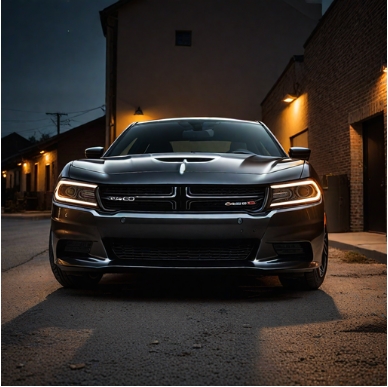The Evolution of the Aston Martin Cygnet: An In-Depth Overview
The Aston Martin Cygnet represents a unique chapter in automotive history—a compact luxury city car born from a collaboration between the iconic British automaker Aston Martin and Toyota. Its development was driven by a desire to blend Aston Martin’s signature luxury and craftsmanship into a small, urban-friendly package, primarily aimed at urban dwellers seeking exclusivity and style without compromising on quality. This article traces the Cygnet’s evolution, from its conception and production to its various models and trim levels.
Origins and Concept (2009–2010)
The idea for the Aston Martin Cygnet originated around 2009 when Aston Martin sought a solution to meet the European Union’s regulations on carbon emissions, which penalized manufacturers with high fleet averages. Aston Martin, known for its high-performance and luxury grand tourers, faced challenges in reducing emissions across its lineup. To address this, Aston Martin partnered with Toyota, a brand renowned for efficient, small city cars, and acquired the rights to rebadge the Toyota iQ.
The collaboration aimed to create a vehicle that maintained Aston Martin’s luxury standards but with a significantly reduced carbon footprint. The concept was unveiled in 2009 as a concept car, receiving positive attention for its innovative approach to urban mobility.
Production and Launch (2011–2013)
Production Years: 2011 to 2013
The Aston Martin Cygnet officially entered production in 2011, with the first deliveries beginning in early 2011. Manufactured at Toyota’s plant in Japan, the Cygnet was a badge-engineered version of the Toyota iQ, modified to meet Aston Martin’s aesthetic and quality standards.
Design and Features:
The Cygnet retained the compact dimensions of the Toyota iQ but featured bespoke bodywork, including a distinctive grille, headlamps, and interior finishes that reflected Aston Martin’s luxury ethos. The interior was upgraded with premium materials, bespoke trim options, and advanced infotainment systems. Despite its small size, Aston Martin emphasized comfort, style, and exclusivity.
Models and Trim Levels
Throughout its production span, the Aston Martin Cygnet was relatively limited in its variants, primarily focusing on offering a luxurious experience rather than multiple trim levels. The key models and trim considerations included:
- Standard Cygnet:
The initial model offered a single, well-equipped trim level that included features such as leather upholstery, climate control, premium audio, custom interior finishes, and unique exterior styling cues. The package aimed to deliver the quintessential Aston Martin experience in a city car format. - Limited Editions and Special Versions:
Given the exclusivity of Aston Martin, a few special editions were released during its brief production run: - Cygnet 007: Commemorating James Bond, this limited edition featured unique badging, special interior trim, and bespoke exterior accents. Production was extremely limited, enhancing its collector appeal.
- Cygnet Black Edition: Offered with a monochromatic black exterior and optional interior upgrades, emphasizing a sleek, stealthy aesthetic.
- Personalization Options:
Aston Martin provided extensive bespoke options for Cygnet buyers, including custom paint colors, interior trims, and unique badging, aligning with the brand’s tradition of personalization.
End of Production and Discontinuation (2013)
Despite its innovative concept, the Aston Martin Cygnet faced challenges in the marketplace. Sales were modest, constrained by its niche positioning, high price point, and the limited practicality of a badge-engineered city car. The high cost of ownership, coupled with the broader market shift towards electric and more versatile urban vehicles, contributed to its limited commercial success.
Production Ceased: 2013
Aston Martin announced the discontinuation of the Cygnet in 2013, after approximately three years of production. The decision was driven by the realization that the model did not align with the company’s strategic goals for growth and profitability.
Post-Production and Legacy
While the Aston Martin Cygnet was short-lived, it remains a notable example of automotive brand collaboration and badge engineering. Its existence underscores Aston Martin’s willingness to explore unconventional avenues to meet regulatory standards and expand its brand presence.
Collector’s Item:
Today, the Cygnet is considered a rare collector’s item, especially the limited editions and bespoke models. Its unique position as the smallest Aston Martin ever produced and its quirky combination of British luxury with Japanese engineering make it a distinctive piece of automotive history.
.
You’ve got that cool car, but is it resting in its own cool place?
It’s visually pleasing for the surrounding areas outside of your home to look as awesome as what’s stored inside your garage! If you desire a truly inspirational environment, you should check into these plans!

.
Summary of the Cygnet’s Evolution
| Year | Model/Edition | Notable Features | Production Notes |
|---|---|---|---|
| 2009 | Concept Cygnet | Showcased at auto shows, design previews | Prototype, no production |
| 2011 | Aston Martin Cygnet (Standard) | Luxury interior, bespoke styling, premium materials | First production models delivered to customers |
| 2012 | Cygnet 007 (Limited Edition) | James Bond-themed, exclusive badging | Very limited run, collector’s item |
| 2012 | Black Edition | Monochromatic black exterior, interior upgrades | Limited availability |
| 2013 | Discontinuation | Focus shifted away from badge-engineering | End of production |
Conclusion
The Aston Martin Cygnet stands as an intriguing example of automotive innovation driven by regulatory pressures and brand experimentation. Its brief but notable life from 2011 to 2013 reflects Aston Martin’s willingness to explore new segments, even if only temporarily. With its limited models, special editions, and bespoke options, the Cygnet remains a fascinating footnote in Aston Martin’s storied history.
Although it was not a commercial blockbuster, the Cygnet’s legacy persists as a testament to the brand’s pursuit of luxury in all forms and its capacity to adapt creatively to changing automotive landscapes.







